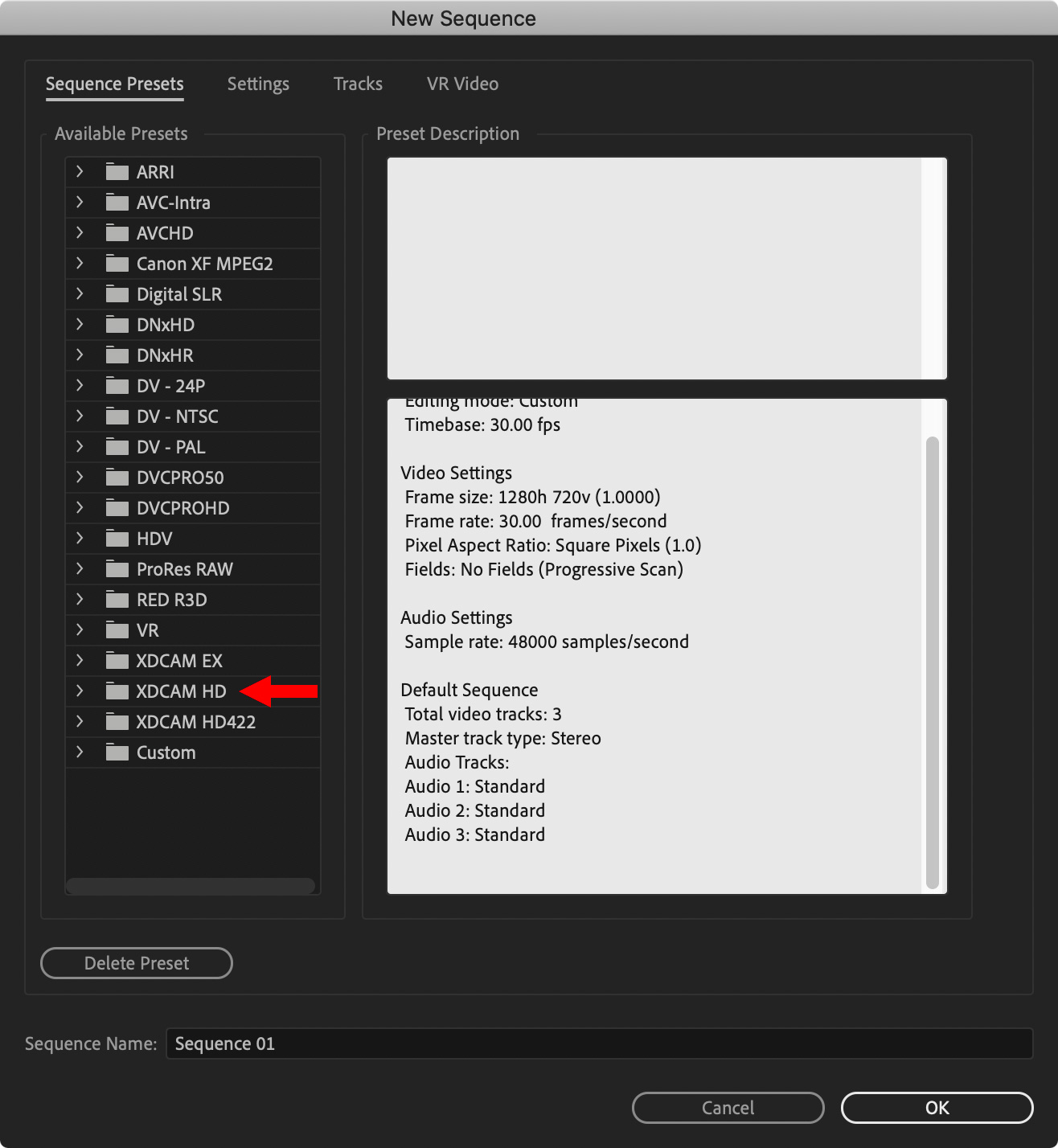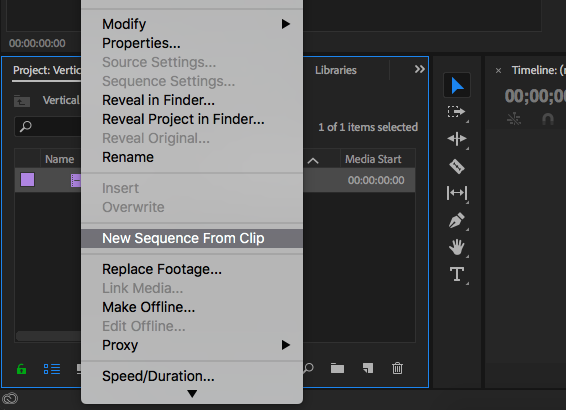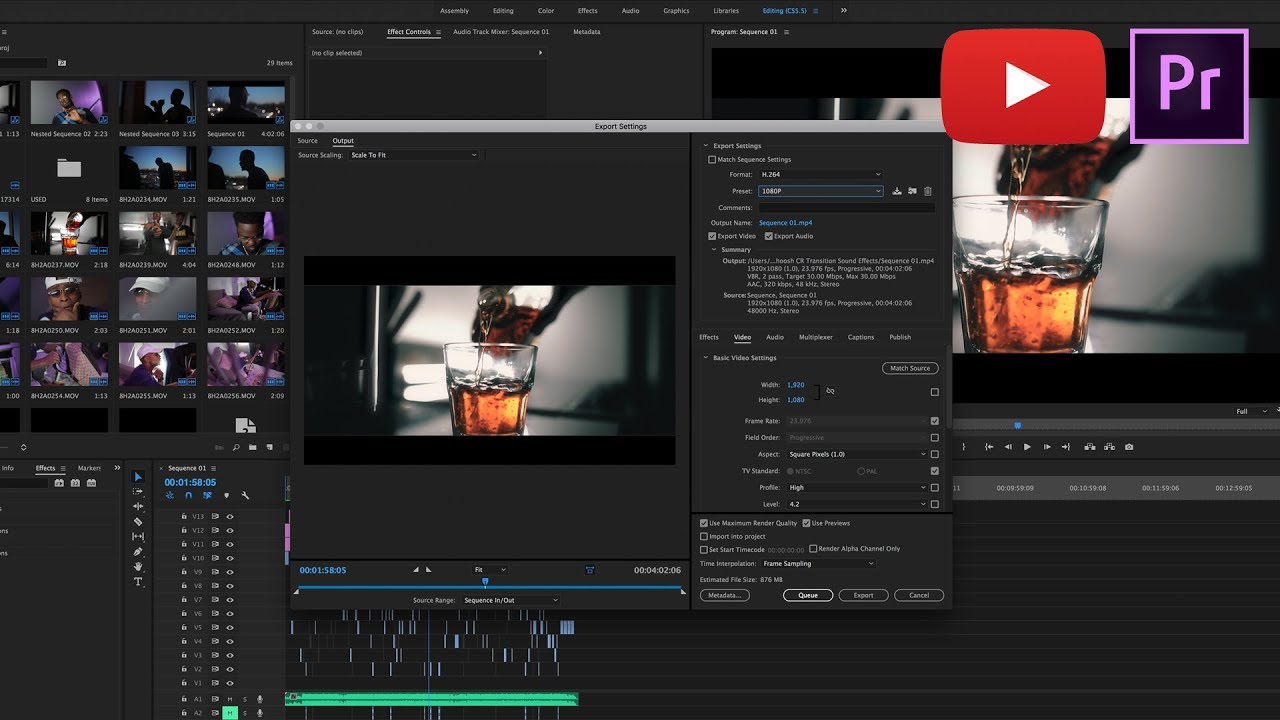- 2100 is an ITU-R Recommendation released in July 2016 that defines high dynamic range (HDR) formats for both HDTV 1080p and 4K/8K UHDTV resolutions. These formats use the same color primaries as Rec. 2020, but with different transfer functions for HDR use. 2100 does not support the YcCbcCrc scheme of Rec.
- Get started with Adobe Premiere Pro. Set up and use Head Mounted Display for immersive video in Premiere Pro; Editing VR. Export to Panasonic P2 format.
Don't know how to change aspect ratio in Premiere? What to do if you already start editing, and find out the video is not in the desired aspect ratio as you wish? Maybe you want a 16:9 video, and suddenly discovered that your video is 4:3. Or, maybe you want to create a 1:1 square video for Instagram by changing the aspect ratio settings via sequence settings in Premiere.
There are generally two scenarios:
Article Description This excerpt walks you through how to set up a project in Adobe Premiere Pro CS6, including choosing project settings, rendering and playback settings, video and audio display settings, and capture format settings; creating scratch disks; using sequence presets; and customizing sequence settings.
- Content creators who need different versions of a video to publish on various platforms. For instance, 16:9 for YouTube, 1:1 for Instagram, 4:3 to create old school look, etc.
- Beginners who overlook the importance of sequence settings, and later find out the aspect ratio is not as expected.
How to Change Aspect Ratio in Premiere Pro
In fact, the right workflow is to determine what aspect ratio you are going to use in the very beginning. With that answer in mind, you shall shoot the video in that aspect ratio, and set the corresponding aspect ratio in sequence settings before editing.
'But what if I just notice the aspect ratio is wrong? How to change it?' Don't worry, please jump to the next part.
Follow these steps to set aspect ratio in Premiere:
Step 1. Launch Premiere Pro and open your existing project (or create a new project).
- Open up Premiere Pro and stay in the Start page.
- Click on the 'New Project' to create something new with your own settings.
Step 2. Press Ctrl + N to create a new sequence (or go to Files > New > Sequence).
Step 3. Set sequence settings. The Frame size is the dimension of the video you are going to make. Once it's settled, you will see the aspect ratio right besides the box.
For instance, if the frame size is set at 1920 horizontal 1080 vertical, then the aspect ratio is 16:9. If you are going to make a square video, the number of pixels horizontally shall equals that vertically. Say, 1080x1080, 760x760, etc.
However, for beginners, it's difficult to learn all those big concepts, or to ensure that sequence settings match their source video.
In that case, you can import the source video into resources bin, and drag it to timeline. Then Premiere will ask if you want the sequence settings to match your source video.
Let's go on and break it down to steps.
Step 4. Press Ctrl+ I to import a video (or go to File > import…)
Note: though you can directly drag and drop a video into the resource bin, or even directly drag it to the timeline, it is a good habit to import video the way step 4 does.
Step 5. Drag and drop your clip into the timeline.
If there is a mismatch, then you shall see the following dialog box.
Step 6. Click change sequence settings.
By so doing, parameters such as timebase (Adobe's way of saying FPS), fields will match your video.
Step 7. Check what the current sequence settings are in Menu: Sequence > Sequence settings.

Step 8. Now that all the other settings match the source video, it's your call to change aspect ratio or leave it as it is.
The actions to take are case-specific, and largely depend on how you decide to reconcile the mismatch between source clips and the output video dimension you require.
Change Aspect Ratio When You Already Started Editing
There are three strategies to change a horizontal video to landscape in Premiere.
- Crop the horizontal video, and obviously, you will lose many interesting scene because the top and bottom part of the video are being cropped.
- Pillar boxing the source video: this will add black bars on both sides of the vertical video.
- A more popular way of pillar boxing: instead of adding black bars, a blurred background will be added, with the some content of the video.
To better illustrate the steps, we uses cases below.
Tutorial for strategy 1:
Step 1. Click sequence settings from the menu.
Step 2. Change 1080x1920 to 1920x1080.
Step 3. Click on the clip, and you shall see the blue box with pointers. Drag it to enlarge image to fill in the screen.
Since the top and bottom part of the video are cropped, you might want to add keyframes and motion effects to pan the video to include more details of the scene.
Above all, this strategy is not recommended, unless what is being cropped won't affect how the video delivers its message.
Tutorial for strategy 2:

Step 1. Click sequence settings from the menu.
Step 2. Change 1080x1920 to 1920x1080.


Step 3. Click on the footage, and drag the blue pointers to resize the video.
Though you can successfully change aspect ratio from 9:16 to 16:9, it is not practical in daily life. Though 4:3 to 16:9 works the same way, with less area of black bars, it is still not desirable. Our recommendation remains the same: think carefully and set correct aspect ratio before shooting the video.
Display Format Adobe Premiere Crack
Tutorial for strategy 3:
Step 1. Change sequence settings to 1920x1080.
Step 2. Drag your clip to video track 2.
Step 3. Copying your clip by pressing Alt (Option on Mac) and drag your clip to track 3.
Step 4. Click video clip on the first track, and blur the video clip.
Conclusion
To be honest, despite its professional functions and impressive performances, cropping in Premiere Pro is quite complex and not friendly particularly to those entry-level users. But luckily, there does exist a perfect workaround - VideoProc, a handy and visualized video-processing software, by which you can set aspect ratio with one mere click.
Bonus Tips: How to Quickly Change Aspect Ratio
For video editing beginners or occasional users, it would be an overkill to launch large programs to change aspect ratio. There are many lightweight video processing tools on the market to fulfill your need.
VideoProc - Crop videos or change aspect ratio easily.

- Built-in Crop feature to remove unwanted edges.
- Full list of aspect ratio options: 16:9, 16:10, 1:1, 4:3, 4:5, 2:1, 2:3, etc.
- Convert video formats, transcode, change resolutions, etc.
- Editing features: compress, cut, crop, merge, stabilize and more.
Step 1. Free download VideoProc.
Step 2. Load the original video.
- Open VideoProc > click the first button 'Video' to enter into Video Processing panel.
- Click on the '+Video' button to add the original video from the local drive.
Step 3. Modify the settings.
- Choose the target format in the bottom toolbar > Click Browse to select the save path > Click Crop button
Step 4. Aspect ratio change in VideoProc.
Display Format Adobe Premiere Editor
In the Crop editing page, first check the box to Enable Crop, and there're two ways for you to change aspect ratio:
- Mere one click - click Preset arrow to choose the common aspect ratio, such as 16:9, 4:3 and 1:1 (square video). That function is not supported in Premiere Pro and makes cropping easy especially for beginner-level users.
- Crop the image from the left, top, right, bottom by adjusting position numbers.(Similar to percentage adjustment in Premiere Pro)
Step 5. Click Done and export the target video.
A wrong aspect ratio would result in video distortion or unsightly black bars — if you are not adding it intentionally to create wide screen cinematic look — but the problem is, too often than not, one only notice the problem after editing is finished. Say, you already added titles, stickers, and everything. Later you find out the video is edited in 4:3, while popular YouTube video uploading setting is 16:9. If you go ahead and upload it anyway, there will be ugly black bars on the left and right sides.
Using VideoProc, you can quickly change the aspect ratio of a video without a learning curve. Besides cropping a video and changing the aspect ratio, this software also helps you to fix Premiere won't support MKV errors, you can use it to rough cut video, convert video to editing friendly video format without quality loss.

Comments are closed.